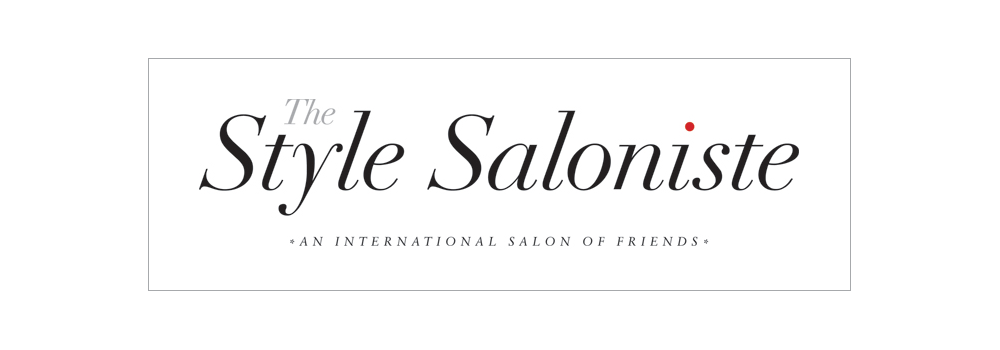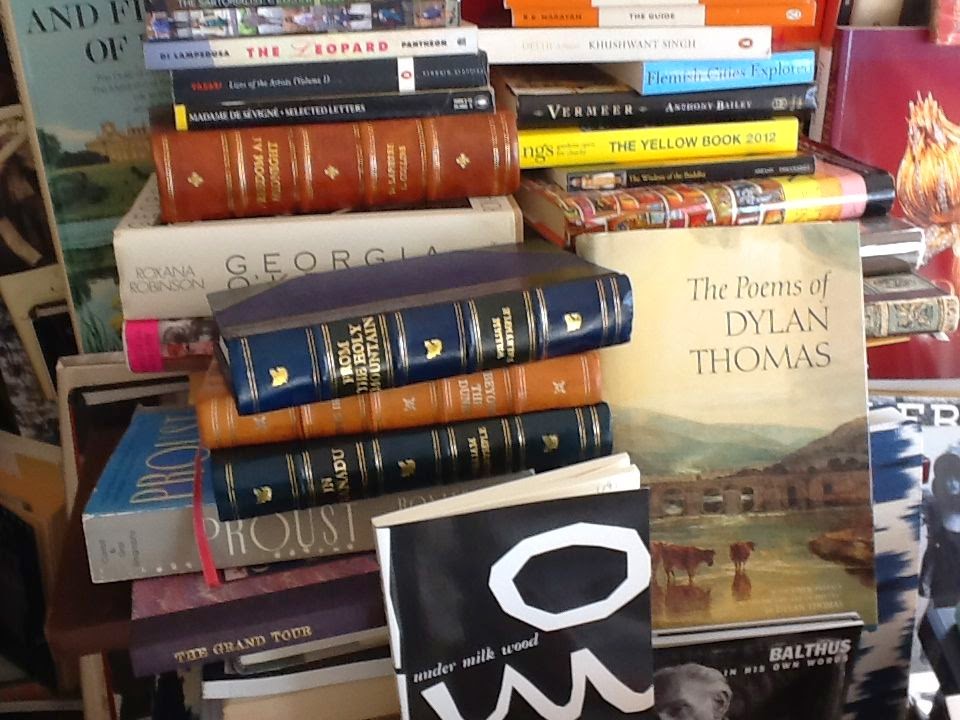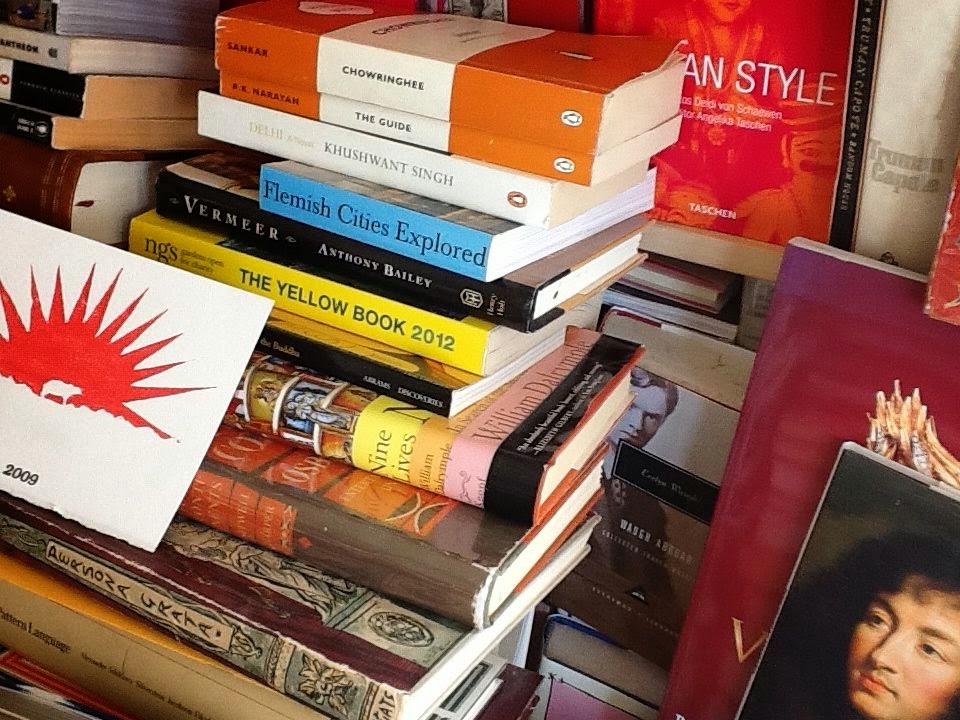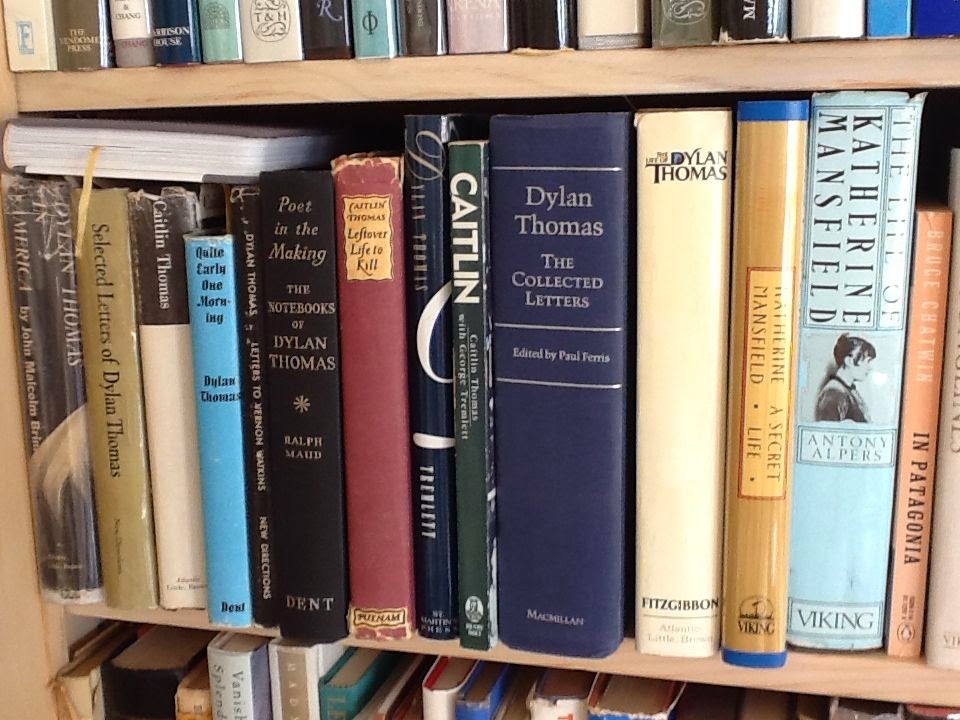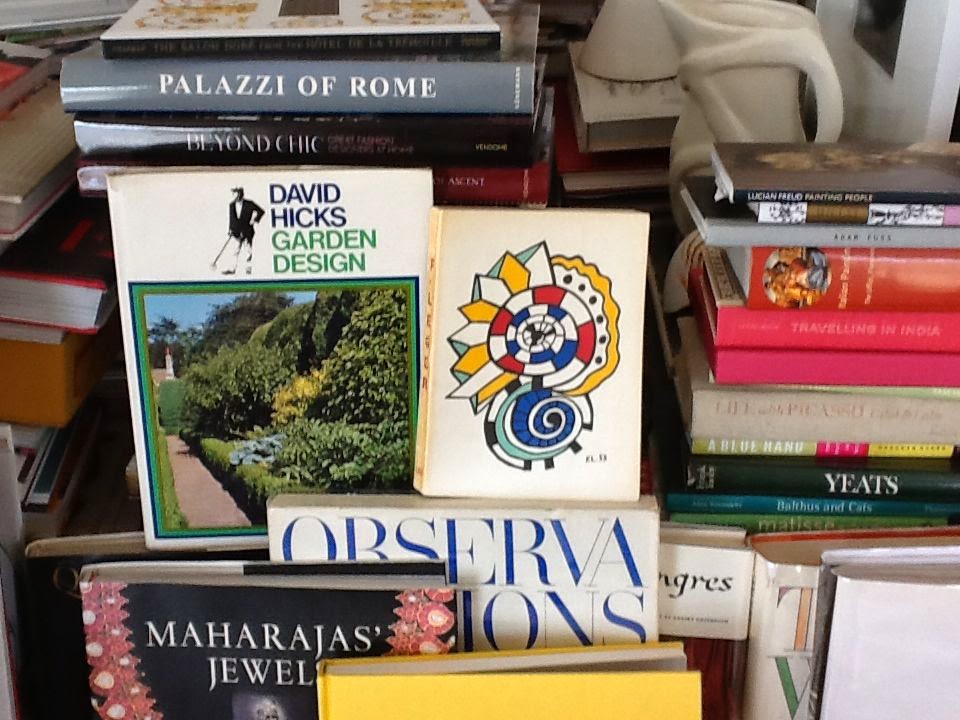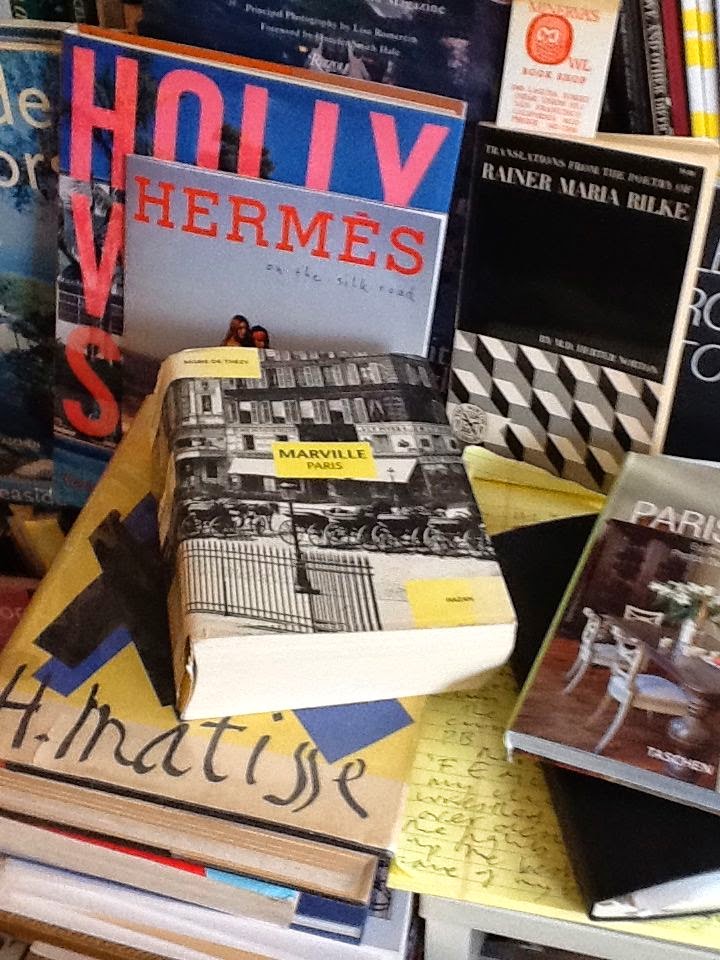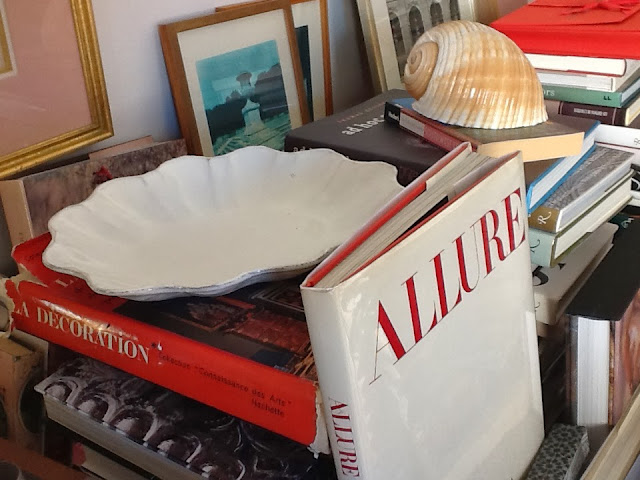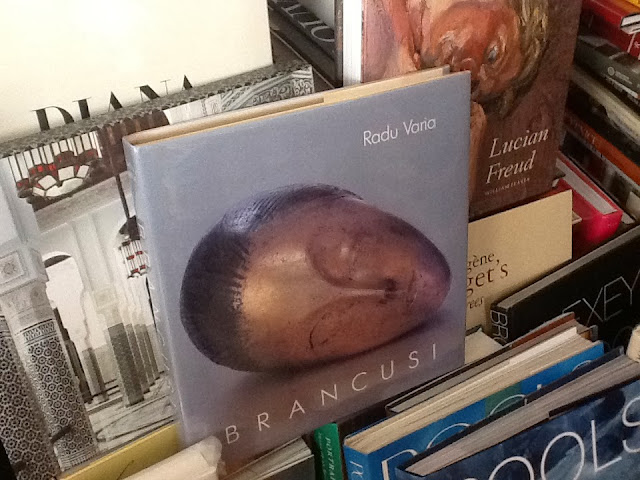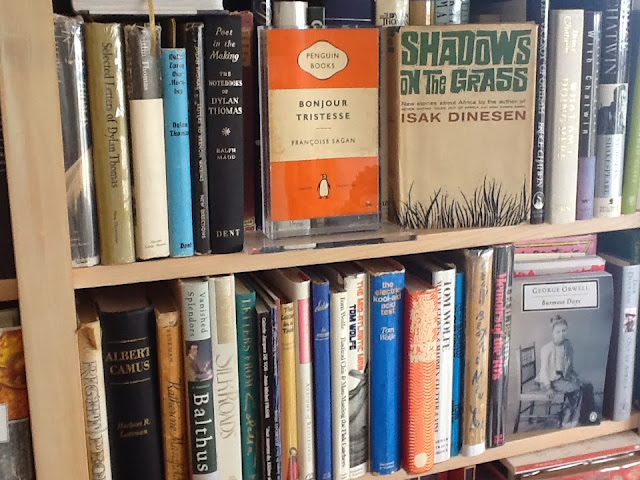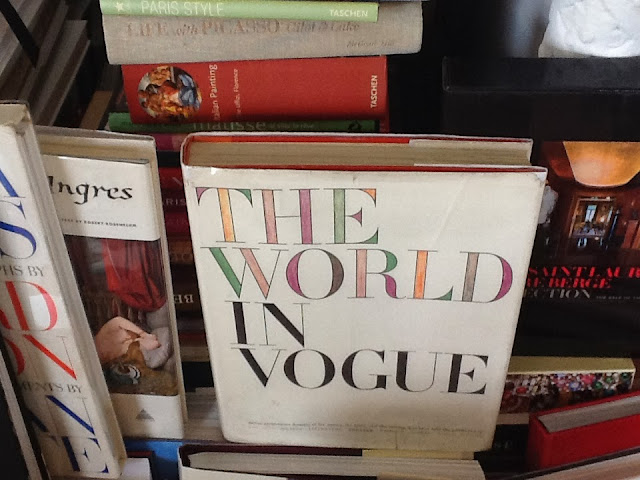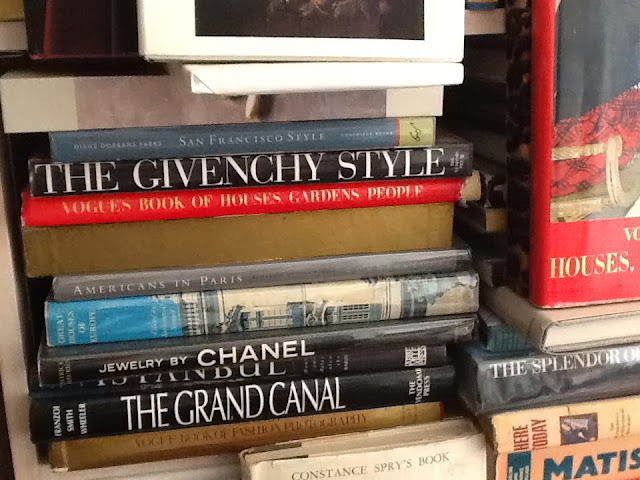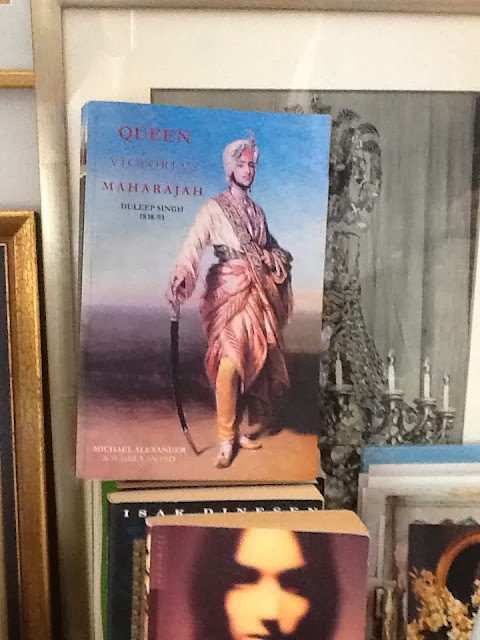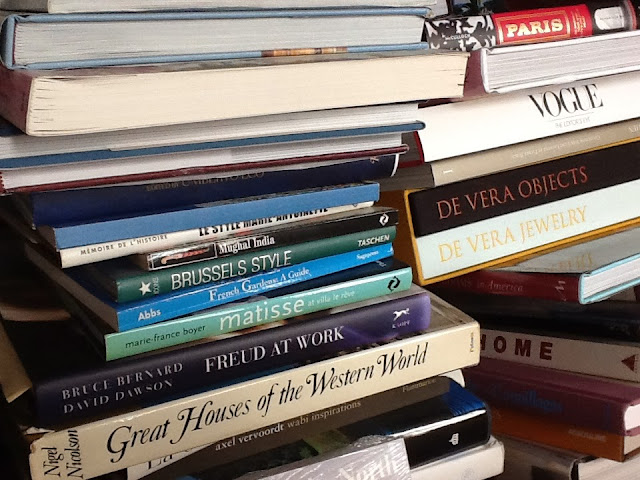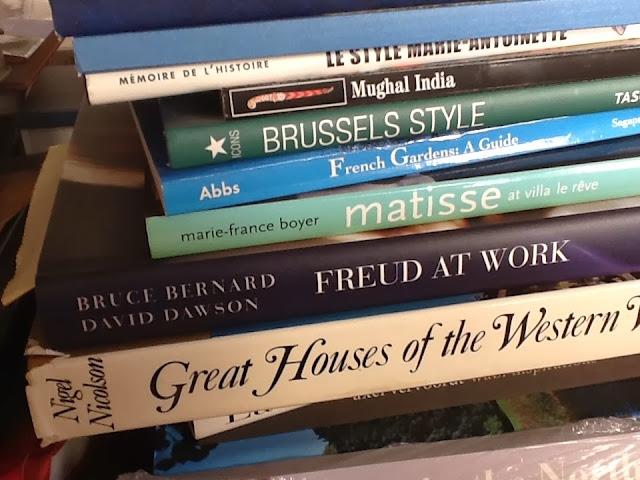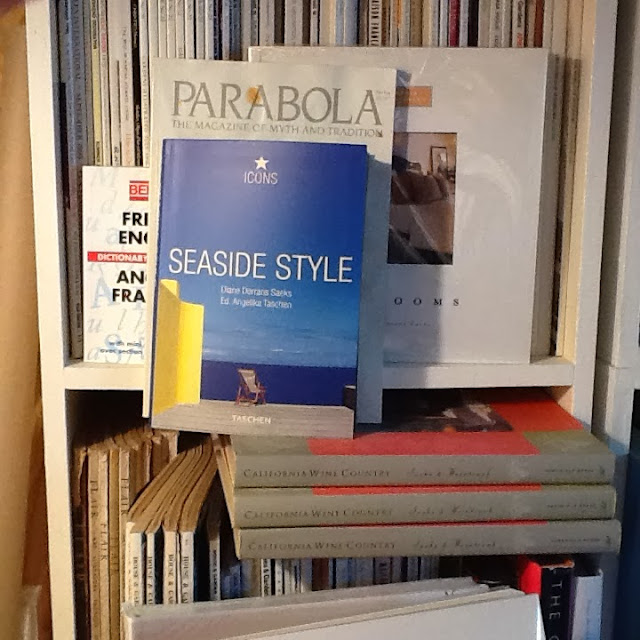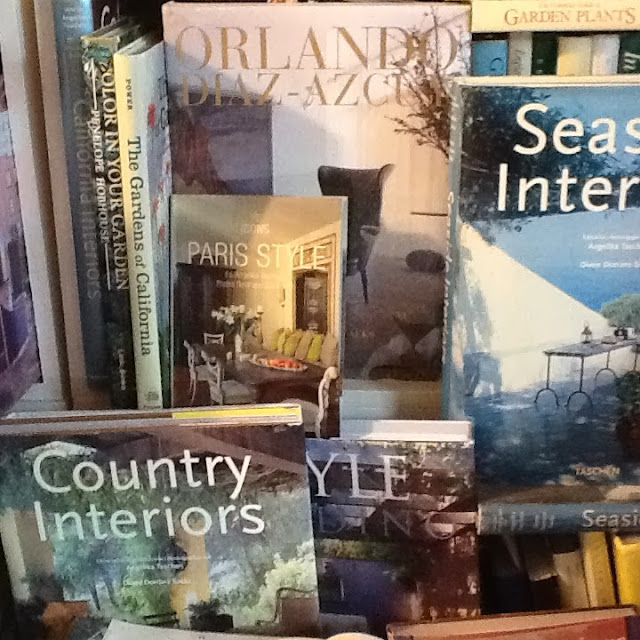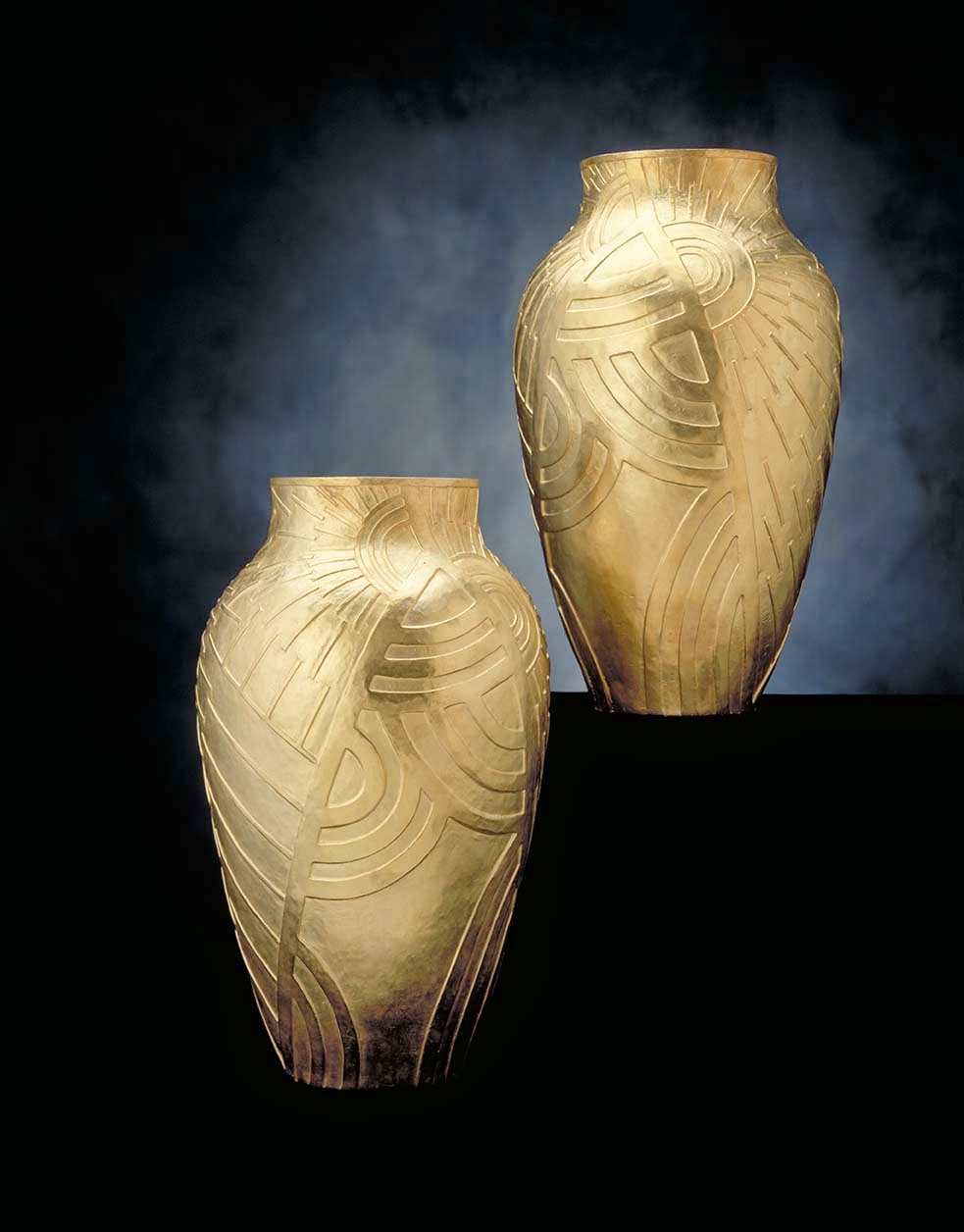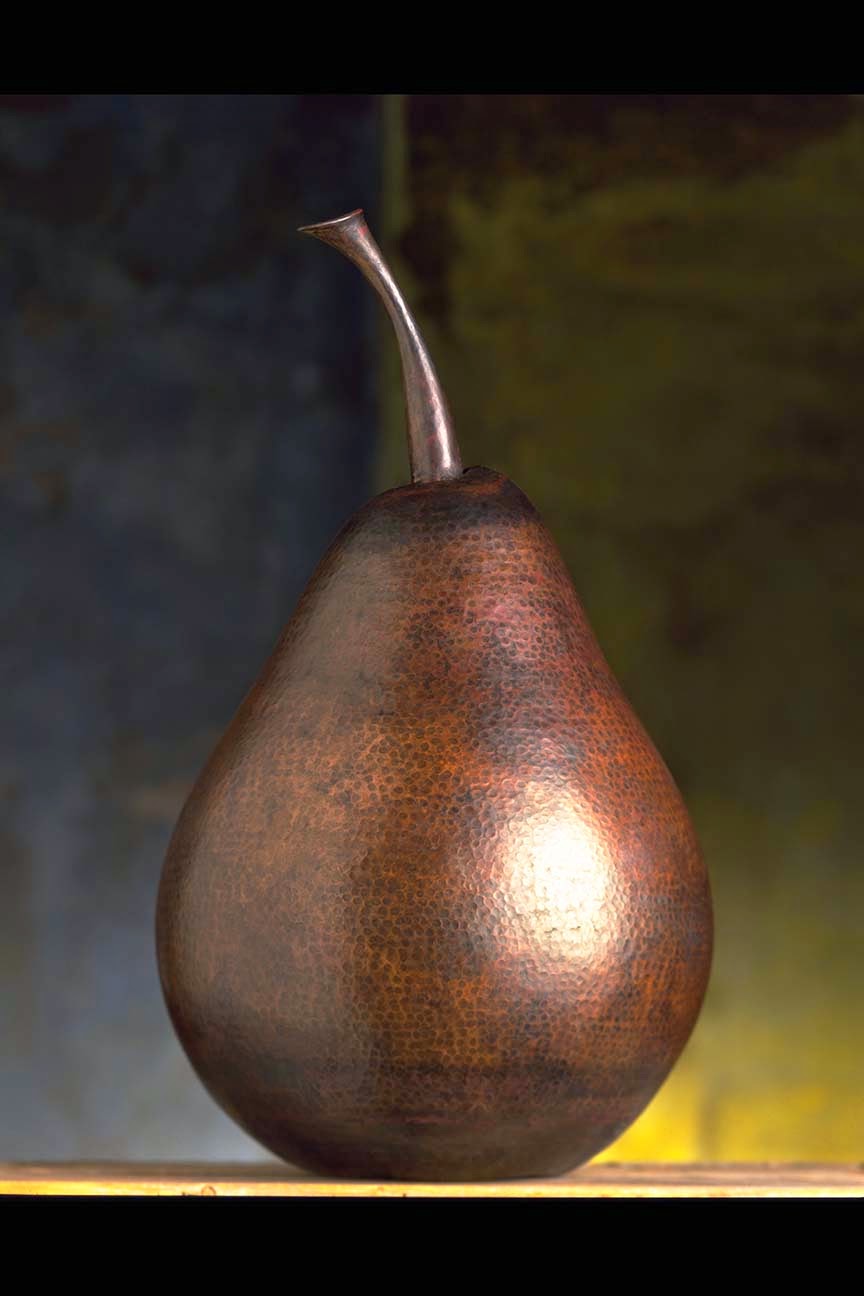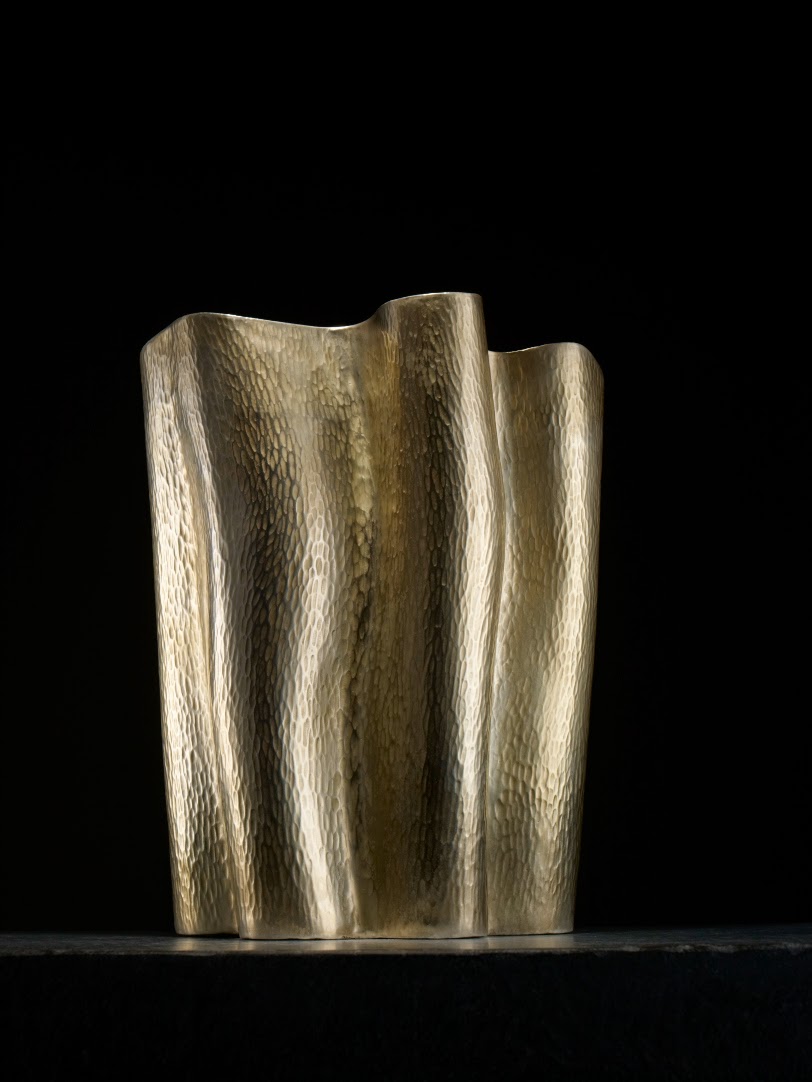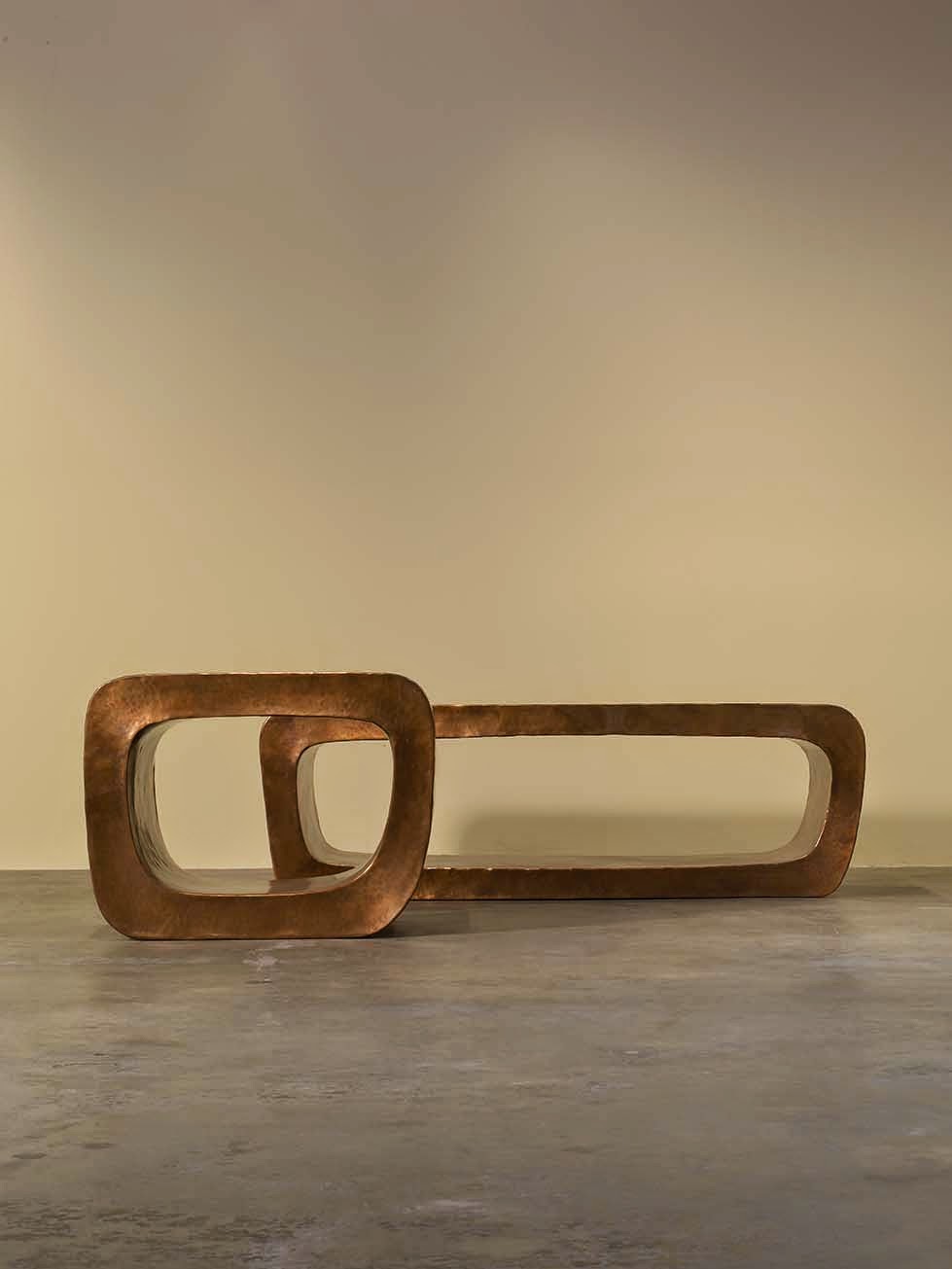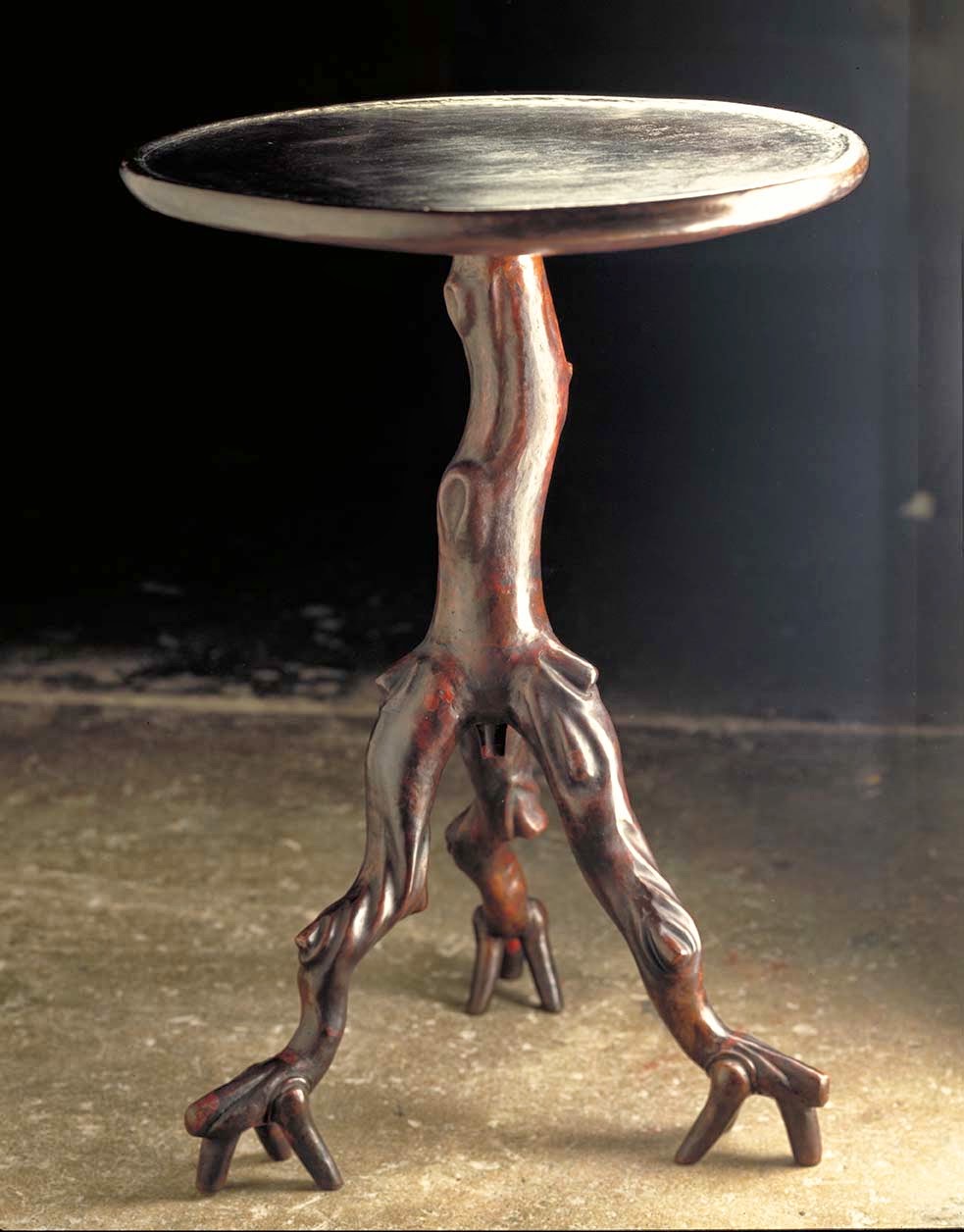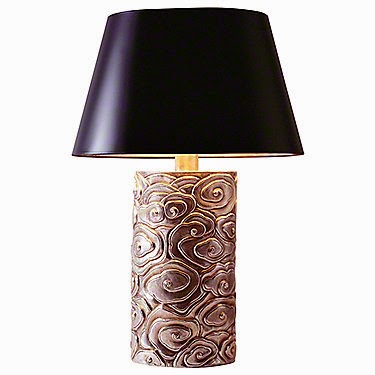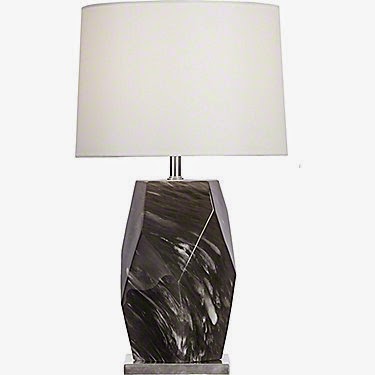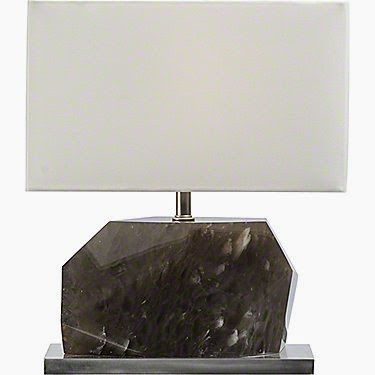Last December, I spontaneously (everyone was away) started taking iPad images of my books. That lead to a post in late December—and an overwhelming response from my gorgeous readers. You are all book lovers.
Hundreds of emails followed, and lots of delight. Many said you loved the Vreeland collections. A reader in Paris liked the French design books. A friend in London loved the ripped covers of the Beaton books. Others of you admired the helter-skelter stacks and piles.
One reader commented that I only had ‘one Proust’. Others went directly to Amazon or their local bookshops and started ordering books that had inspired. I hope you find lots of inspiration. Many new books have come since Last December..
Torn pages and all, I do not ‘arrange’ my books and I never ‘style’ them…they are collected and read and used for research. These are working books…not for ‘shelfies’. The gatherings are always changing as I read, buy, gather, fine, and edit.
Every so often I edit. I usually ask a friend to come and help, for moral support. I don’t like to part with a single book, but often ‘weeding’ reveals books I’d forgotten I have. (You’ll see that I often have two or three versions of the same books…because I see one at a flea market or used book shop, and buy it just in case.)
As you know, when I am in Jaipur, I stay at the Rambagh Palace hotel because I’ve always loved it, but also because MR. NAVEEN JAIN’S BOOKSHOP is there. I visit many times a day.
Above are some (a few) of the books on India I have had custom hand-bound and gilded and tooled from Mr. Jain’s shop. Highly recommend when you are in India.
I have lots of ‘fetish’ authors and topics and collections. Over the years, since high school or before, I’ve collected Dylan Thomas biographies and poetry collections and later I started collecting all the Patrick Leigh Fermor books, which lead to all the Devonshires/ Mitfords. And then Cecil Beaton books, books on Katherine Mansfield, and many other biographies. I shunt them together to keep each other company.
Design books clump and clutter and gather and converse and move around constantly … these books work hard.
Notice that a few of my books are hidden here or there. I love them. And I usually focus on the one I’m currently writing and don’t look back.
I keep reference books on gardening, biographies, and odds and ends of interest. One thing leads to another. A line of research leads to many more books. I hope you’re inspired to go immediately to your local bookstore.
My Post from December 2013:
I’ve taken some pictures for you—images of books on my shelves, books I love. You might call them ‘shelfies’.
As we perambulate, I hope you discover books you’d like to add to your collection, information you’d love to glean.
My books are working books—for reference, inspiration, ideas and images.
Their words and ideas enrich my work and my life.
As I sit here writing, I’m surrounded by William Dalrymple, Diana Vreeland and Bruce Chatwin (‘Chatty’), Isak Dinesen (Karen Blixen) , and the Duchess of Devonshire with Paddy Fermor, alongside Francoise Sagan (smoking, bien sur) and Colette.
Over there are Tom Wolfe and J.D. Salinger, and Jhumpa Lahiri and Jack Kerouac with Edith Wharton, unlikely friends, but essential reading.
Dylan Thomas and Yeats are peering over at the quiet but mighty C. P. Cavafy. His poem 'Ithaca' is the best inspiration anyone could discover.
For fresh design insight I turn to Axel Vervoordt, Andrée Putman and Elsie de Wolfe. For images I have Cy Twombly, Lucian Freud, Brancusi. Irving Penn and Richard Avedon and Peter Beard .
And up there is Pablo Neruda jousting with Gerard Manley Hopkins and Rilke, perfect companions, and then dear Cecil Beaton in conversation with Evelyn Waugh.
To set dreams in motion, there are Lesley Blanch, Elizabeth David and Christopher Alexander.
And at the moment, I’m on Page 233 of ‘The Luminaries’ by Eleanor Catton. Highly recommend. Set in New Zealand, where I grew up.
And let’s never forget Nancy Mitford, Giuseppe di Lampedusa and the Bronte sisters.
Many books have ripped covers, others were acquired with plastic Brodart covers to stop them from falling apart.
I found some at Paris flea markets like the funky Place d'Aligre and the atmosphere old pavilion on rue Brancion, near Parc Georges Brassens.
I inherited books from designer friends and collectors. They’re personal, not especially valuable because they’re used, read, piled up, jammed on shelves, and dusted a bit aggressively by my housekeeper.
Yes, the stacks get topply. It's an opportunity to find old favorites—or to de-accession certain books no longer of passionate interest. I long ago de-accessioned almost all cookbooks—I don't cook—except a few early volumes by Alice Waters.
I de-accession books and donate them to Friends of the San Francisco Public Library or to San Francisco charities’ shops I support.
Hermione Lee’s biography of Edith Wharton or the Mitford sisters’ memoirs and letters, or writing by Patrick Leigh Fermor or Willy Dalrymple are among my favorite books. I seldom read fiction, although sometimes I drift into detective novels like those by Colin Cotterill about Dr. Siri, the national coroner of seventies chaotic Laos. Highly recommend.
I re-read my original school reference books on Gerard Manley Hopkins or Dylan Thomas. I'm reassured by favorite covers, scuffed and friendly, of books I've had since college.
Fashion, yes, I collect designer monographs (Lanvin, Dior) and biographies. And lots of Chanel.
Art: I’m always studying Lucian Freud perfectionism, and Cy Twombly makes a case for spontaneity.
Some of them are on my shelves and many are archived and locked away.
I’ve written twenty-two books.
When I glance at the covers—‘Santa Barbara Living’ or ‘Michael S. Smith Elements of Style’ or ‘Ann Getty Interior Style’ or ‘Seaside Interiors’ (translated into eight languages) and ‘Orlando Diaz-Azcuy’ (all designed by the great Paul McKevitt) I observe. And there is the California Design Library series that is still selling like mad at Kunokuniya in Tokyo.
I admire the many talented people I have worked with, my fantastically great editors and Paul McKevitt, a superb art director.
I thank my genius publishers and all the designers and architects and photographers and publicists I work with. I'm incredibly fortunate to work with the best of the best. I appreciate them every day. That’s the thrill. The great people I work with and write about.
My eyes are usually focused on the book I’m writing now—but I am grateful for every book I’ve published. Always.
Please let me know some of your favorites—and some great books I may have missed.
CREDITS:
All images here by DIANE DORRANS SAEKS.
Hundreds of emails followed, and lots of delight. Many said you loved the Vreeland collections. A reader in Paris liked the French design books. A friend in London loved the ripped covers of the Beaton books. Others of you admired the helter-skelter stacks and piles.
One reader commented that I only had ‘one Proust’. Others went directly to Amazon or their local bookshops and started ordering books that had inspired. I hope you find lots of inspiration. Many new books have come since Last December..
I’m Crazy for Books. I Read Them, I Write Them. I Collect Them. I Can’t Live Without Them
Come with me for a Stroll and Perusal Around my Library, an Informal Tour of my Book Collection, my Reference Books, my Favorites.Books Everywhere
I like my books to be piled up as they arrive…so that new ones are added on top of old ones, and then I find a shell or a picture and throw them in the mix.Torn pages and all, I do not ‘arrange’ my books and I never ‘style’ them…they are collected and read and used for research. These are working books…not for ‘shelfies’. The gatherings are always changing as I read, buy, gather, fine, and edit.
Every so often I edit. I usually ask a friend to come and help, for moral support. I don’t like to part with a single book, but often ‘weeding’ reveals books I’d forgotten I have. (You’ll see that I often have two or three versions of the same books…because I see one at a flea market or used book shop, and buy it just in case.)
As you know, when I am in Jaipur, I stay at the Rambagh Palace hotel because I’ve always loved it, but also because MR. NAVEEN JAIN’S BOOKSHOP is there. I visit many times a day.
Above are some (a few) of the books on India I have had custom hand-bound and gilded and tooled from Mr. Jain’s shop. Highly recommend when you are in India.
I have lots of ‘fetish’ authors and topics and collections. Over the years, since high school or before, I’ve collected Dylan Thomas biographies and poetry collections and later I started collecting all the Patrick Leigh Fermor books, which lead to all the Devonshires/ Mitfords. And then Cecil Beaton books, books on Katherine Mansfield, and many other biographies. I shunt them together to keep each other company.
Books by Irving Penn are treasured, and so are all the Vogue collections, and books on the Maharajahs and Indian art. ‘Made for Maharajahs’ has collections of art and design made for the father of my friend, Richard Holkar.
Design books clump and clutter and gather and converse and move around constantly … these books work hard.
Notice that a few of my books are hidden here or there. I love them. And I usually focus on the one I’m currently writing and don’t look back.
I keep reference books on gardening, biographies, and odds and ends of interest. One thing leads to another. A line of research leads to many more books. I hope you’re inspired to go immediately to your local bookstore.
My Post from December 2013:
I’ve taken some pictures for you—images of books on my shelves, books I love. You might call them ‘shelfies’.
As we perambulate, I hope you discover books you’d like to add to your collection, information you’d love to glean.
My books are working books—for reference, inspiration, ideas and images.
Their words and ideas enrich my work and my life.
The books on my shelves are ripped and foxed, chipped and torn and faded. They’re read and book-marked and stashed. They are stained with morning coffee and evening ink, and they’re bumped and sometimes falling apart.
They are not in collectible order. They’re not perfect. They work hard. They’re not trophies, on display. I like that. I don’t care that they are not pristine. I like signs of time passing.
They are endlessly inspiring company.
I hope you will discover new books and authors. Come with me and take a look.
My New Year’s wish for everyone: more books.
They are not in collectible order. They’re not perfect. They work hard. They’re not trophies, on display. I like that. I don’t care that they are not pristine. I like signs of time passing.
They are endlessly inspiring company.
I hope you will discover new books and authors. Come with me and take a look.
My New Year’s wish for everyone: more books.
As I sit here writing, I’m surrounded by William Dalrymple, Diana Vreeland and Bruce Chatwin (‘Chatty’), Isak Dinesen (Karen Blixen) , and the Duchess of Devonshire with Paddy Fermor, alongside Francoise Sagan (smoking, bien sur) and Colette.
Over there are Tom Wolfe and J.D. Salinger, and Jhumpa Lahiri and Jack Kerouac with Edith Wharton, unlikely friends, but essential reading.
Dylan Thomas and Yeats are peering over at the quiet but mighty C. P. Cavafy. His poem 'Ithaca' is the best inspiration anyone could discover.
For fresh design insight I turn to Axel Vervoordt, Andrée Putman and Elsie de Wolfe. For images I have Cy Twombly, Lucian Freud, Brancusi. Irving Penn and Richard Avedon and Peter Beard .
And up there is Pablo Neruda jousting with Gerard Manley Hopkins and Rilke, perfect companions, and then dear Cecil Beaton in conversation with Evelyn Waugh.
To set dreams in motion, there are Lesley Blanch, Elizabeth David and Christopher Alexander.
And at the moment, I’m on Page 233 of ‘The Luminaries’ by Eleanor Catton. Highly recommend. Set in New Zealand, where I grew up.
And let’s never forget Nancy Mitford, Giuseppe di Lampedusa and the Bronte sisters.
Sometimes I group authors and concepts together. The Chatwin books are adjacent, and the Dylan Thomas are close, and old Salinger copies and Tom Wolfe are stacked together. But I see that Lucian Freud is all over the place, and Diana Vreeland is scattered. I admit that I have several copies of some books. When I see a great book, and I’m not quite sure where my copy is…I buy it to be sure I have the book on hand.
Many books have ripped covers, others were acquired with plastic Brodart covers to stop them from falling apart.
I found some at Paris flea markets like the funky Place d'Aligre and the atmosphere old pavilion on rue Brancion, near Parc Georges Brassens.
I inherited books from designer friends and collectors. They’re personal, not especially valuable because they’re used, read, piled up, jammed on shelves, and dusted a bit aggressively by my housekeeper.
Yes, the stacks get topply. It's an opportunity to find old favorites—or to de-accession certain books no longer of passionate interest. I long ago de-accessioned almost all cookbooks—I don't cook—except a few early volumes by Alice Waters.
I de-accession books and donate them to Friends of the San Francisco Public Library or to San Francisco charities’ shops I support.
1. Chasing Diana Vreeland
Diana Vreeland, she of the fervent opinions and loopy directives, worked with top art directors and photographers and together they produced some of the most alluring books.
‘Allure’ and ‘The World in Vogue’ and an old tattered copy of ‘Harper’s Bazaar’, an early compilation, are vivid. Every year there are more Vreeland ‘Memos’ books (I have a portfolio of her printed memos) and collections. No other fashion editor has been so inspiring.
2. The Lives of Others: Biographies I Love
Hermione Lee’s biography of Edith Wharton or the Mitford sisters’ memoirs and letters, or writing by Patrick Leigh Fermor or Willy Dalrymple are among my favorite books. I seldom read fiction, although sometimes I drift into detective novels like those by Colin Cotterill about Dr. Siri, the national coroner of seventies chaotic Laos. Highly recommend. 3. India On My Mind
I’ve been collecting books about India most of my life. Volumes on Indian jewelry, the Mughals, the Nizams, biographies of maharajahs and maharanis, Indian history, the Raj, on Ghandi-ji, on geography and travels and regions are all on hand.
When I’m in India I’m looking for new research books—so I drop in to Mr. Jain’s bookshop at the Rambagh in Jaipur, or linger at the authoritative Bahrisons bookshop at the Khan Market in New Delhi.
In Paris, Gallignani on the rue de Rivoli always has rare books on Indian culture and architecture.
In Paris, Gallignani on the rue de Rivoli always has rare books on Indian culture and architecture.
4. Torn Pages: Some Favorites
Many of my books are coming apart and I love that. I like worn pages, turning ivory. These books are the best company, with history and signs of life.I re-read my original school reference books on Gerard Manley Hopkins or Dylan Thomas. I'm reassured by favorite covers, scuffed and friendly, of books I've had since college.
5. Design, Art and Fashion
Design books are my essential references. I’ll always have Axel Vervoordt’s books on hand—as well as books on the great English country houses. Billy Baldwin always rates a special place on my shelves—and authoritative books on French décor, architecture and design have their own section.Fashion, yes, I collect designer monographs (Lanvin, Dior) and biographies. And lots of Chanel.
Art: I’m always studying Lucian Freud perfectionism, and Cy Twombly makes a case for spontaneity.
6. A Few by DDS
You may be wondering if I keep copies of my own books.Some of them are on my shelves and many are archived and locked away.
I’ve written twenty-two books.
When I glance at the covers—‘Santa Barbara Living’ or ‘Michael S. Smith Elements of Style’ or ‘Ann Getty Interior Style’ or ‘Seaside Interiors’ (translated into eight languages) and ‘Orlando Diaz-Azcuy’ (all designed by the great Paul McKevitt) I observe. And there is the California Design Library series that is still selling like mad at Kunokuniya in Tokyo.
I admire the many talented people I have worked with, my fantastically great editors and Paul McKevitt, a superb art director.
I thank my genius publishers and all the designers and architects and photographers and publicists I work with. I'm incredibly fortunate to work with the best of the best. I appreciate them every day. That’s the thrill. The great people I work with and write about.
My eyes are usually focused on the book I’m writing now—but I am grateful for every book I’ve published. Always.
A Great New Year!
I wish my friends and wonderful readers every happiness for 2014.
I wish everyone, everywhere, a year of delicious reading, fervent discoveries and fearless turning of pages. Happy Reading!
Please let me know some of your favorites—and some great books I may have missed.
CREDITS:
All images here by DIANE DORRANS SAEKS.
